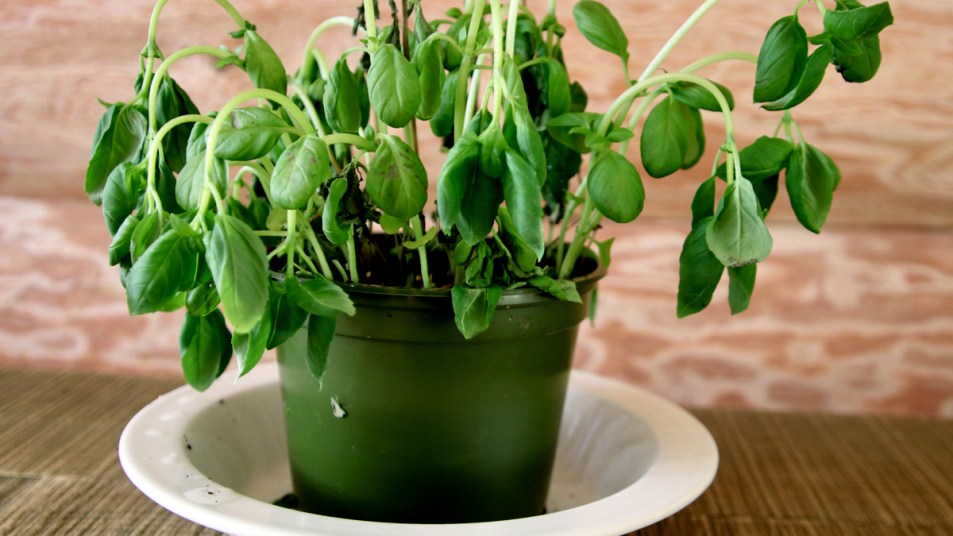Expired Oats for Plants: Revive Wilted Houseplants With This Breakfast Staple

If your houseplants are starting to look a little sad and droopy, it’s easy to feel like you’ve lost your green thumb. You may have already tried the typical remedies: Moving your plant into more or less sunlight, adjusting the temperature setting in your home, and changing how much and how often you water those roots. But after all that, those wilted leaves may still look… wilted. If you have yet to see an improvement, your potted plants may actually be craving some extra nutrients.
Why oatmeal is good for plants
Frontiers in Plant Science reports that phosphorous, zinc, and iron are essential for a plant’s survival. Plants often have a difficult time absorbing enough of these three minerals because they do not dissolve easily in water and they aren’t always present in soil.
Fortunately, there is a cheap and easy fix hiding in your cereal cabinet: Oatmeal. Dry oats contain high amounts of phosphorus and small amounts of zinc and iron, according to the USDA. They also contain plenty of potassium, magnesium, and calcium, which are considered “secondary” nutrients in plants. These are only needed in only small quantities, but are still vital to plant health.
Whether you use fortified oats or unfortified oats is up to you. Unfortified oats are still a good source of calcium, iron, potassium, and phosphorus, but may not contain as much of these nutrients as fortified cereal. Gardening Know How recommends using old-fashioned, slow-cooking, or raw oats instead of quick or instant options, which are pre-cooked and potentially less effective. As explained by several plant enthusiasts, mixing two to three tablespoons of the dry cereal into the soil once per month should do the trick.
The possible downsides of oatmeal for plants
It should be noted that some gardeners do not believe in using oatmeal as a soil enhancer. Joy Kieffer, the author of The Garden Journal, Planner & Log Book (Buy on Amazon, $14.81) wrote on Quora that oatmeal in soil will grow moldy when it gets wet. The safer bet may be to first allow the oatmeal to become compost before incorporating it into plant soil. This may also make it easier for plants to absorb the minerals from the oats.
Other gardeners think that oats in soil are harmless. The experts at Den Garden explain that all organic gardening mixes contain some amount of mold and fungi. Some even believe that having living organisms in the soil is ideal for plant growth.
If you still want to use oats in your soil, make sure you watch your plants for signs of excess mold. White, fluffy mold that grows on leaves or on top of the soil is not likely to harm your plant, but it may compete with the plant for nutrients.
What to do if your plants start to mold
White mold could also be an indication that your plant has too much moisture, or that it’s not getting enough sunlight or air circulation. To remove white mold, Den Garden recommends that you first scrape off the mold while wearing gloves and a mask. Discard the soil it was touching as well. Next, sprinkle a small amount of cinnamon on the soil, which naturally combats fungi and mold. Remember not to water your plant until the top two inches of the soil have dried out.
As an alternative to cinnamon, you can also try spritzing your plant leaves with a mixture of aspirin and water. Acetylsalicylic acid, which is the main ingredient in aspirin, has antifungal properties. To make the concoction, crush two aspirin with a mortar and pestle. Combine the powder with one quart of water in a spray bottle, and you’re done. Spray the mixture on plant leaves once per day until the mold is gone.
How oatmeal can help ward off slugs
As pointed out by Gardening Know How, you can also use oatmeal as a form of pest control, especially if you have outdoor plants. Sprinkle a small amount of oats on top of the soil. Slugs and snails will eat the oats and eventually die after the cereal swells too much in their stomachs. Be sure that you don’t sprinkle too many oats, as they can grow slimy and pack around the stems of your plants when wet. A large amount of oats may also attract unwanted visitors, such as squirrels, rodents, and insects.
Looking for another cheap mineral source to add to your potted soil? Save your egg shells! Crushed-up egg shells are an excellent source of calcium for your plant. Plus, this ingredient will not be susceptible to mold. Keep in mind that the egg shells may not break down for several months, but when they do, they will help aerate your soil and lower the soil’s acidity. With these tips and tricks under your belt, we hope your green thumb comes back in no time.
















